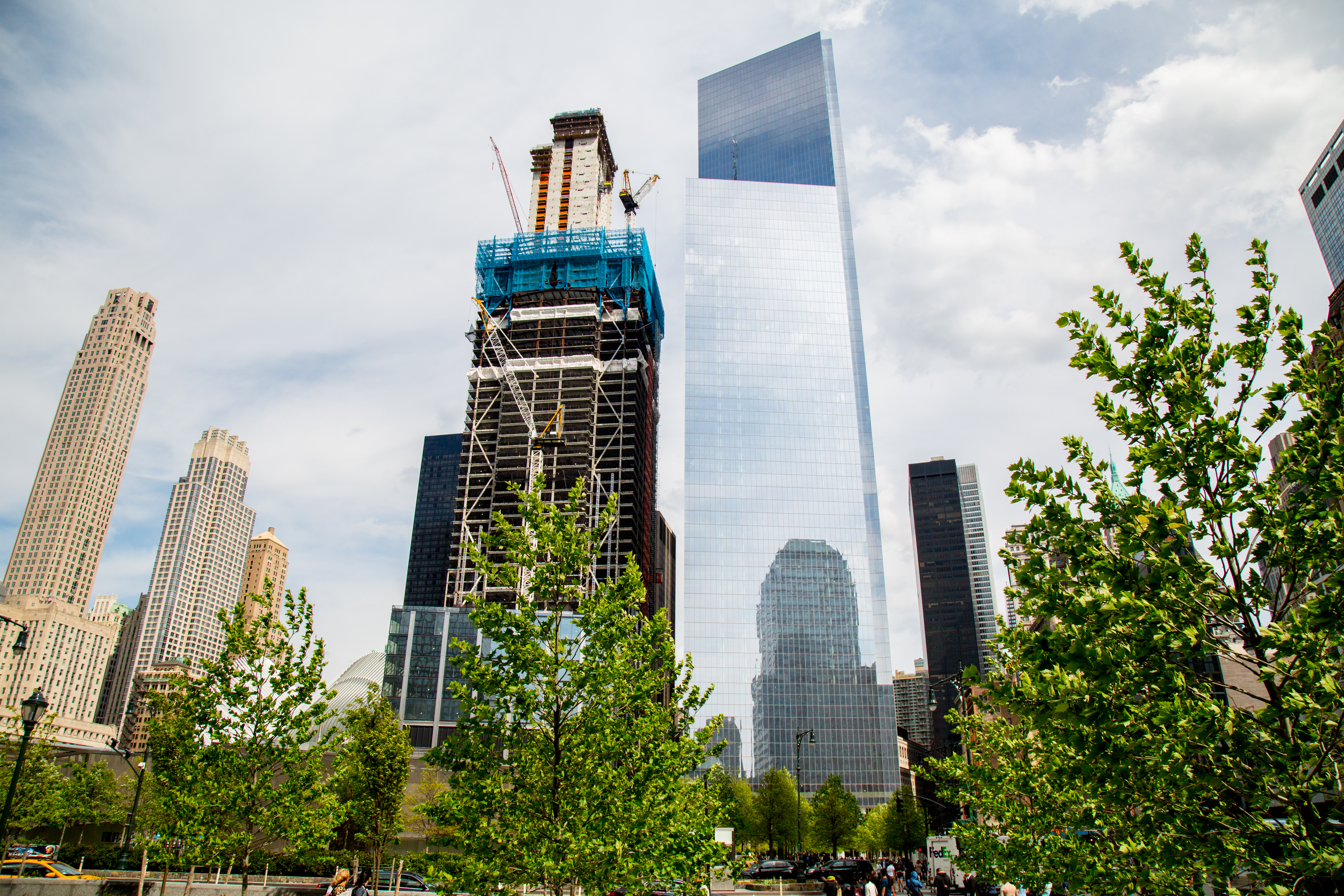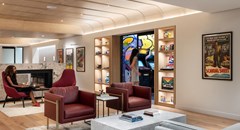By David W. Dunlap | The New York Times
If you think Santiago Calatrava’s transportation hub and shopping mall looks like a bird (or a stegosaurus), you might find 3 World Trade Center next door reminding you of an upside-down Popsicle, with the stick at the top.
Its surprising profile — which is only temporary — results from a construction technique rarely used in New York office towers. The concrete core of the 69-story skyscraper is rising ahead of the steel columns and beams around its perimeter, sometimes 20 or more floors ahead.
On most office towers, structural completion is marked by a “topping out” in which the uppermost beam, signed by the workers, is raised to the building’s pinnacle. Things will be different in June at 3 World Trade Center.
“There will be a ceremony with workers signing the concrete bucket that will be hoisted to the top of the tower,” said Dara McQuillan, the chief marketing officer of Silverstein Properties, which is developing the building.
The steel topping out should occur in October. The $2.75 billion building, designed by Rogers Stirk Harbour & Partners, is to open in 2018. It is being constructed by Tishman Construction, a unit of Aecom. (And like many buildings, its floor count is inflated for marketing purposes, to 80 stories.)
Do not be fooled by the core’s slender aspect on the skyline.
Those concrete walls are three feet thick, on average, and embedded with steel rebar. Within that enclosure, and sheltered from any impact, are emergency stairways, elevator shafts and the vertical channels through which electrical, communication and plumbing lines run.
“The concrete core is its own safety system, both in sturdiness and in the egress it gives,” said Janno Lieber, the president of World Trade Center Properties at Silverstein.
A core acts like a stiffening spine, helping stabilize a skyscraper against tremendous lateral forces, chiefly wind.
Concrete cores generally cost less than steel-frame cores, which must be reinforced to achieve comparable rigidity. Apartment towers typically have concrete cores and perimeters. In office towers, by contrast, column-free floor space is at a premium. So steel framing is used around the perimeter, since it can span greater distances.
Such buildings — concrete cores and steel perimeters — are called “composite” or “mixed” structures, said William F. Baker, a prominent engineer and partner in the Chicago office of Skidmore, Owings & Merrill.
“The first examples I knew about were in Chicago in the mid-1980s,” he said. “I have seen this system all over the world: London, Shanghai, Seoul, Dubai, Beijing, Kuala Lumpur, et cetera. New York is one of the last places to adopt it.”
Why?
Until recent years, resistance came from Local 40 of the International Association of Bridge, Structural, Ornamental and Reinforcing Iron Workers.
Long accustomed to being at the top of projects, ironworkers were wary of working below another trade without added overhead protection, especially one like concrete pouring and forming that depends on speed.
Until Sept. 11, 2001, there did not seem to be much incentive to press a construction technique upon a reluctant union.
In the terrorist attack, however, hijacked jetliners easily pierced the steel-framed cores of the World Trade Center towers. Developers, contractors, engineers and architects in New York took a fresh look at composites.
Richard Wood, the president and chief executive of Plaza Construction, was one of the first. His company had been given the job of building 11 Times Square, on Eighth Avenue between 41st and 42nd Streets, developed by SJP Properties.
The development team met with Robert Walsh, the business manager of Local 40. Since 11 Times Square was a speculative project in which cost saving was paramount, they said, a composite structure was imperative. “Otherwise,” Mr. Wood said, “we’ll be forced to do an all-concrete building.”
That was probably the last thing an ironworker wanted to hear. Mr. Walsh supported the approach “once he understood that we were left no choice,” Mr. Wood recalled. “He said, ‘The only thing I demand is that you keep my people safe.’” (Mr. Walsh did not respond to a request for comment.)
“We cocooned the whole thing and worked very hard to create a safe environment for the ironworkers,” Mr. Wood said. Eleven Times Square was completed in 2010.
At 3 World Trade Center, blue nylon mesh framed the work platforms around and below the 54th floor, the highest point in the building last February, when I visited. (It is now taller than 4 World Trade Center.)
Three hundred and twenty cubic yards of concrete were being poured, pumped up from trucks arriving steadily from the Ferrara Brothers plant in the Red Hook section of Brooklyn, while steel was being erected below.
“Everything is wrapped to keep it contained,” Sean Johnson, a Silverstein vice president, said.
Though he had plenty else to occupy him on the site, Mr. Johnson noted that a composite building presented at least one distinct problem:
“There are two topping-out parties to plan.”


_news_small.jpg)